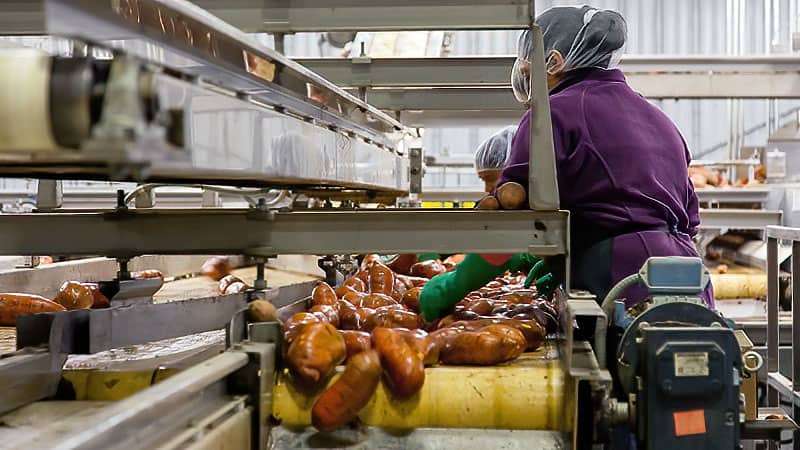Deep Cleaning Protocols After a Food Manufacturing Facility Shutdown

The ongoing COVID-19 pandemic is disrupting normal operations for countless food and beverage manufacturers. This disruption may occur due to limited staff numbers (as a result of social distancing requirements, layoffs, or staff sickness); additional cleaning and sanitation requirements in relation to the control of COVID-19 transmission; changes in the level of production (up or down); and even site shutdown. These in turn can lead to a loss of resources for, or focus on, food safety sanitation.
Food manufacturers have a legal obligation to produce safe food and it is therefore essential that routine sanitation practices continue and that additional sanitation is undertaken after a period of shutdown. Employers also have a legal obligation to ensure the safety of their workforce, including minimizing their risk of COVID-19 infection. Ask us about Color Coded Cleaning Tools and Shadow Boards!
Sanitation and cleaning for food safety
Review your sanitation SSOPs and ensure you have the right tools for the job
- Review Sanitation Standard Operating Procedures (SSOPs) for required tools and equipment
- Review your color-coding plan
- Check all shadow boards, tool racks, and storage locations for tools that need to be replaced
Check individual work stations to ensure the correct material handling tools are present
- Ensure that all tools are present in their correct areas
- Make sure tools match the established color-coding plan
Discard any tools that are damaged or that are in poor condition
- Damaged tools can harbor microorganisms and allergens in deep gouges or cracks
- Pieces or materials may break off in production areas, causing foreign body contamination
- Damaged tools can injure employees
Cleaning brand new tools before their first use in your facility
- Even new tools could be contaminated with allergens, microbes, or foreign bodies
- Manufacturers of cleaning and material handling tools do not sanitize or sterilize tools before they are shipped to end-users unless they specifically state otherwise
- Even tools that are individually wrapped should be cleaned before their first use
Cleaning existing tools
- Tools that are not properly sanitized and dried after use or prior to shutdown may become a source of contamination on re-use
- Cleaning and material handling tools themselves can be vectors for pathogens
Cleaning the nooks and crannies
- Include spots or areas within the facility, equipment, or tools that are hard-to-reach or inspect
- They are much more difficult for the sanitation crew to properly clean and disinfect. It’s critical to carefully clean.
Sanitation and cleaning for COVID-19 control
This cleaning is what should be done on an ongoing and frequent basis when the plant is back in operation
- Surfaces that are commonly touched by employees should be cleaned more frequently. These include:
- Consider adding a unique color to your color-coding plan to specifically clean these non-food contact surfaces
- Tools should also be cleaned between use by different people to lessen the chance of spreading COVID-19
Train staff on the importance of food safety and COVID-19 safety plans
Training is an important step in building and maintaining a food safety culture. This applies to general food safety plans and enhanced COVID-19 safety plans. A culture of food safety includes:
- Strong leadership that encourages cooperation
- Ongoing food safety training for employees and higher-ups
- Engaged and informed employees
- Self-audits built into the work structure
- An organizational structure based on a complicated chain that gives more people moreresponsibility instead of a direct flow
- Empowered employees who share responsibility for and are rewarded for practicing food safety
- A robust food safety plan that contains preventative measures and controls

